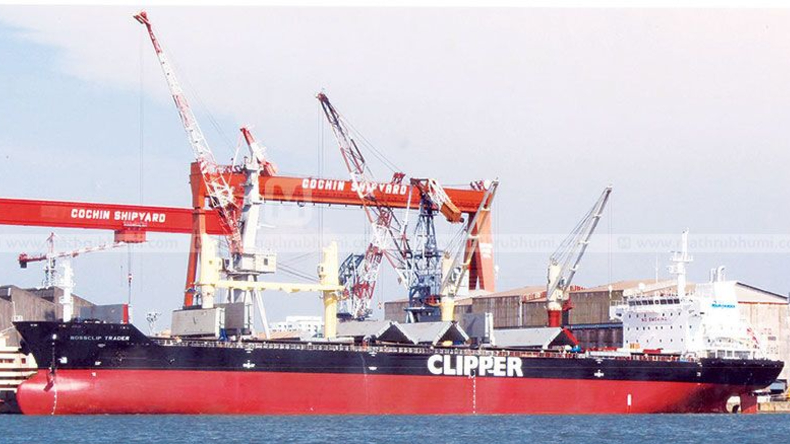THE recent announcement by the Indian government to provide increased development funding to boost local shipbuilding capability shows India has not given up on becoming a leading shipbuilding nation.
Previous attempts by India to become a shipbuilding powerhouse failed, but the Indian government has reportedly been talking to the big shipbuilders and equipment manufacturers of South Korea and Japan to convince them that expanding their production to India would be worth their attention.
The government is attempting to kick-start India as a leading shipbuilder with a multi-billion-dollar cash injection, as it seeks to become a developed economy by 2047.
Its most recent budget, announced on February 1, promised a 250bn Indian rupee ($2.8bn) Maritime Development Fund to support the country’s maritime sector, 49% of which will be stumped up by the government and the remainder from major port authorities and the private sector.
The aim, according to the the Ministry of Ports, Shipping and Waterways, is to boost the global cargo share of India-flagged ships to 20% by 2047 and reduce reliance on foreign-owned vessels.
To that end, the ministry is offering a Shipbreaking Credit Note, worth 40% of the value of a scrapped ship, which can be used against vessels built in Indian yards.
Shipping minister Shri Sarbananda Sonowal announced the creation of new shipbuilding “clusters” of 1m-1.2m gt shipyard capacity each.
“This strategic push is crucial in realising India’s vision of becoming a $30trn economy by 2047,” Sonowal said.
“These efforts will enhance India’s global competitiveness, drive sustainable growth, and solidify its position as a leading global maritime hub.”
The government’s existing Shipbuilding Financial Assistance Policy has also been extended, which will continue to provide financial subsidies to existing Indian yards to, as the Ministry put it, “provide a level playing field” against foreign shipyards.
Further funding for training centres and platforms to develop “innovative shipbuilding designs” has also been earmarked in the budget.
“This holistic approach will not only support industry growth, but also position India as a global leader in shipbuilding and maritime innovation,” Sonowal said.
https://e.infogram.com/_/ts8ixa915uRAQhOUP8aW?parent_url=https%3A%2F%2Fwww.lloydslist.com%2FLL1152499%2FIndia%25E2%2580%2599s-latest-attempt-to-become-a-shipbuilding-powerhouse-appears-more-convincing&src=embed#async_embed
India’s last attempt at becoming a global shipbuilding player didn’t end well. Chiefly financed by private enterprise, a number of Indian shipyards expanded in the 2000s after winning numerous orders for handysize and handymax bulk carriers, during that decade’s dry cargo shipbuilding boom.
Utilising existing European and Japanese designs, shipyards in India struggled to build the first ships and delivery delays were considerable. But just as the sector started to get into its stride, the global financial crisis hit and a raft of order cancellations soon followed.
Production of commercial ships in India peaked in 2010 and has been on a downward spiral since.
However, there are already signs of a renaissance, with European shipowners of smaller general cargoships placing several orders in 2023 and 2024 for new tonnage.
India also has a strong track record in building ships for the offshore sector, albeit at the less sophisticated end of the market.
The general cargo segment is one of the oldest fleets amongst the cargo carrying sector and has a huge fleet replacement requirement. India could be in a good position to fill this requirement, as Chinese shipyards are losing interest in building lower value and smaller cargoships.
https://e.infogram.com/_/i0QHtuuwBnBFAGnn7zFr?parent_url=https%3A%2F%2Fwww.lloydslist.com%2FLL1152499%2FIndia%25E2%2580%2599s-latest-attempt-to-become-a-shipbuilding-powerhouse-appears-more-convincing&src=embed#async_embed
India’s considerable increase in support for its national shipbuilding industry comes during a period when some shipowners are looking for an alternative to China, as threats of sanctions by the US on China-built vessels have not gone away. Therefore, India should have potential in the future to target higher value segments too.
The Indian government has ambitions to become a top-five global shipyard nation. Its unprecedented stimulus package could makes this a possibility, provided that the deployment of funds is managed well.
India has a large pool of engineers and a low cost labour pool, although many of its most experienced personnel are deployed overseas. The nation is also a major recycler of ships. Recycled steel from old ships can be utilised to build new ones, just as shipbreaking is expected to increase considerably from 2025, as the global fleet is increasingly aged.
Sonowal has stated that India is courting major South Korean and Japanese shipbuilders, together with equipment manufacturers to assist in its ambition. Both nations have joint ventures with Chinese shipyards, while South Korean shipyards utilise China for new vessel block construction. Both nations could be interested in an alternative to China.




